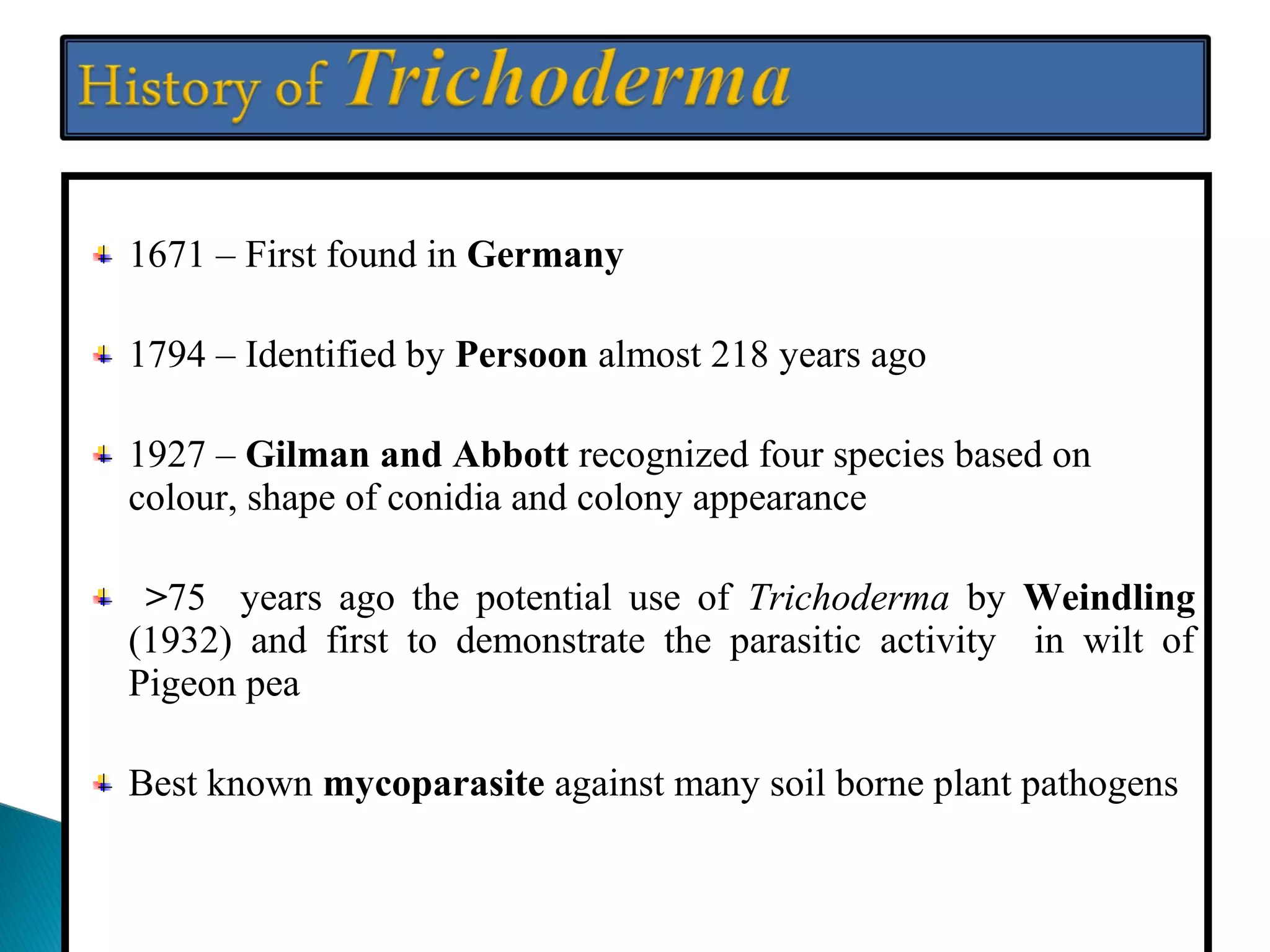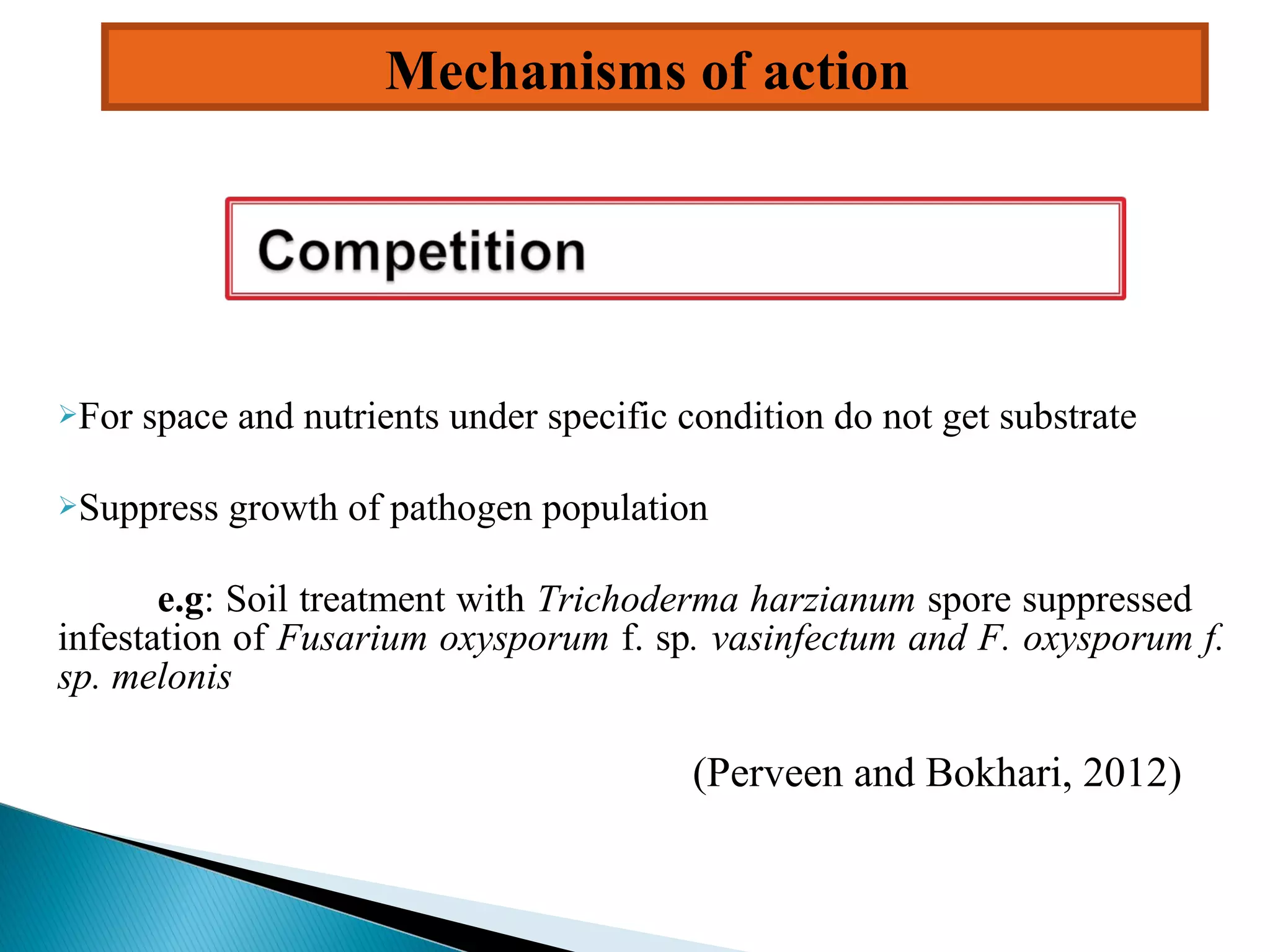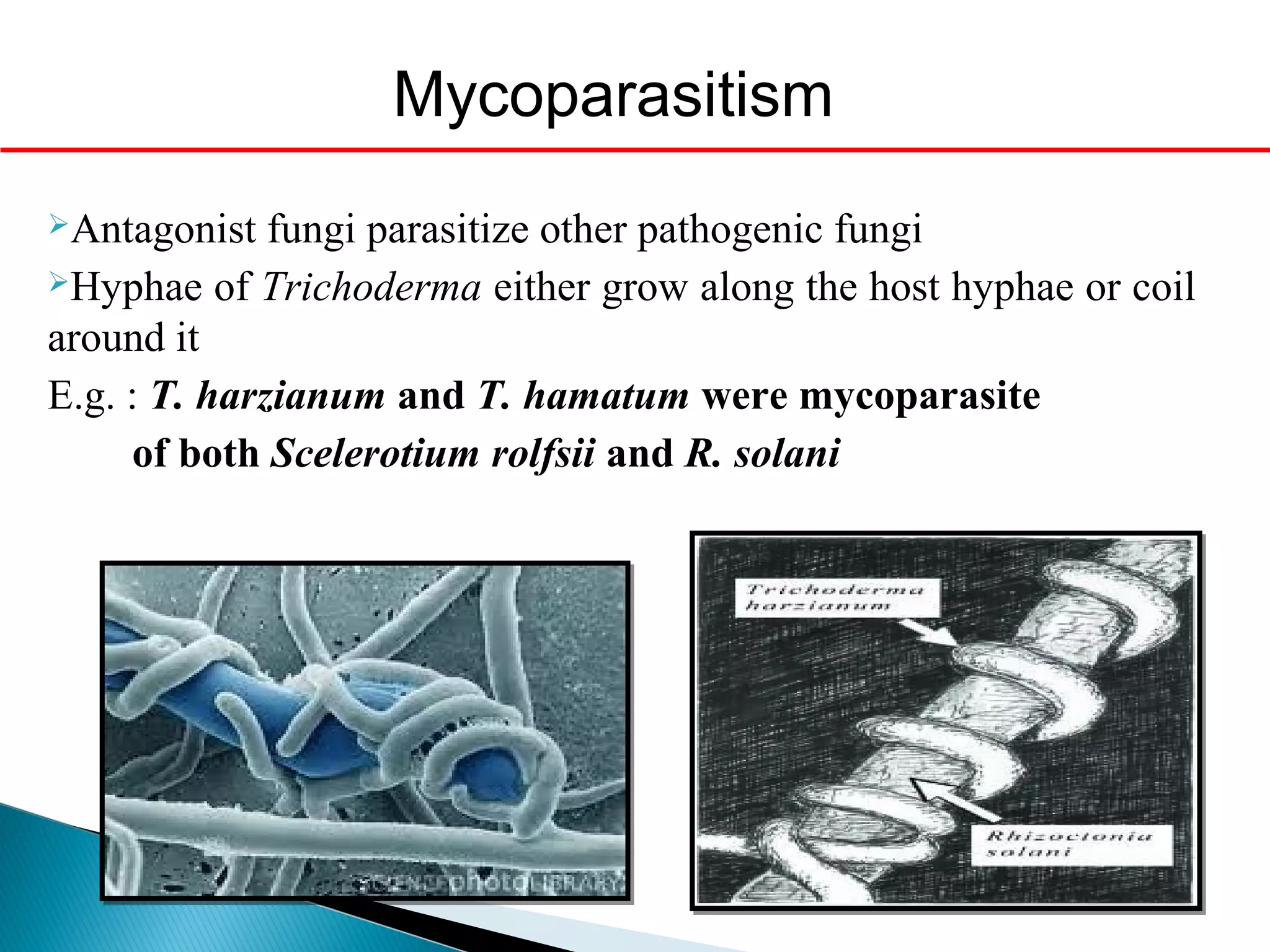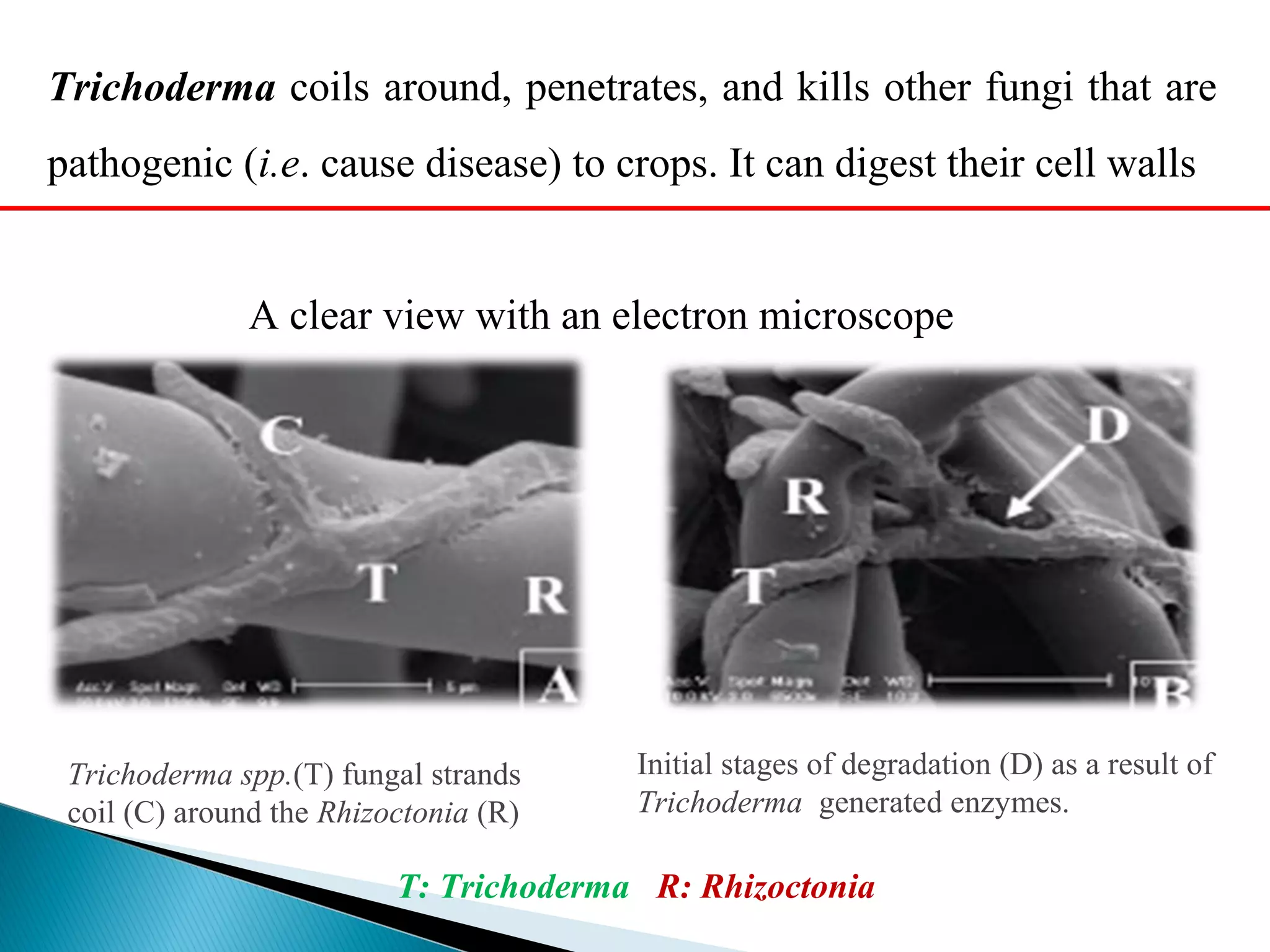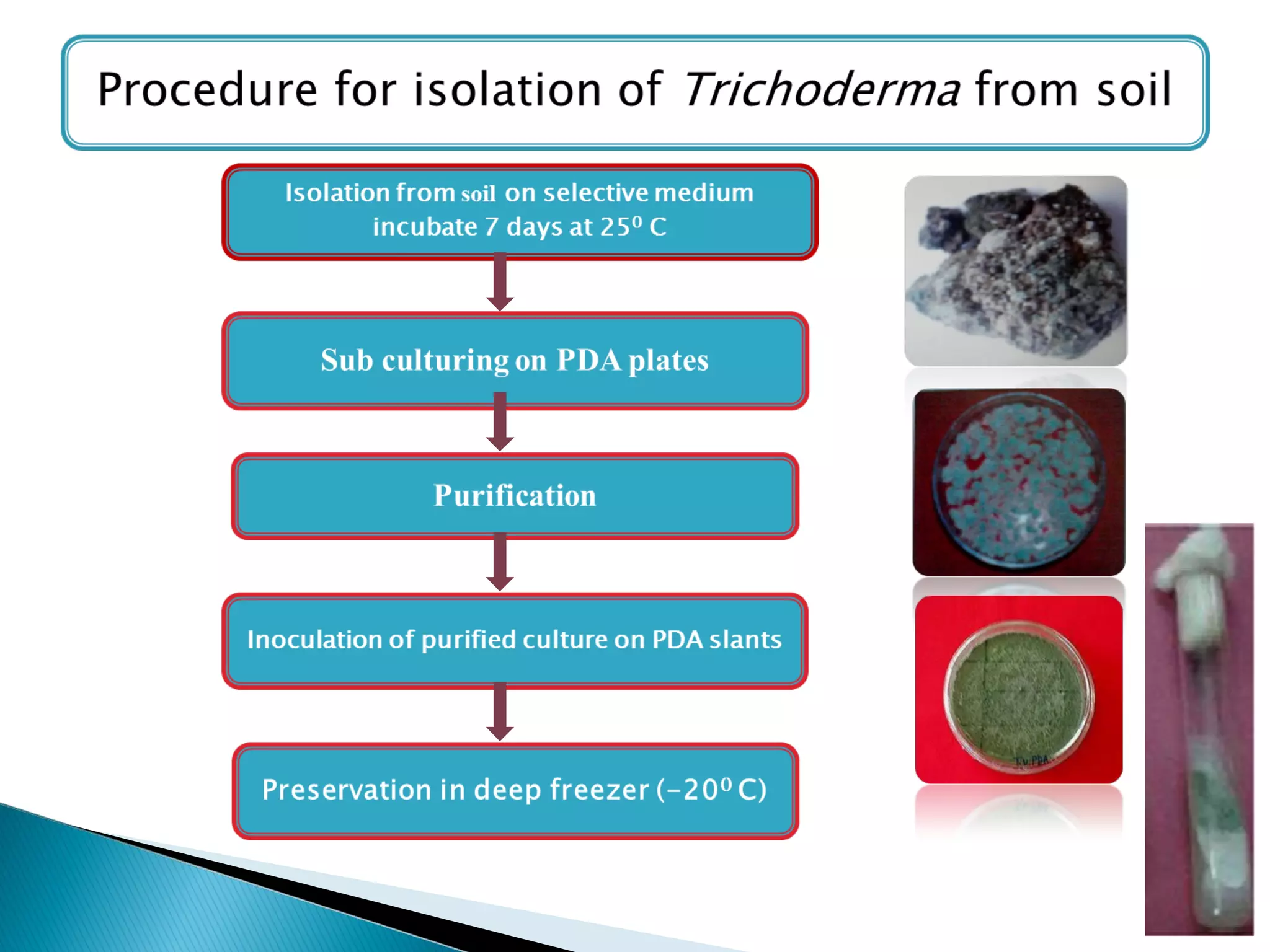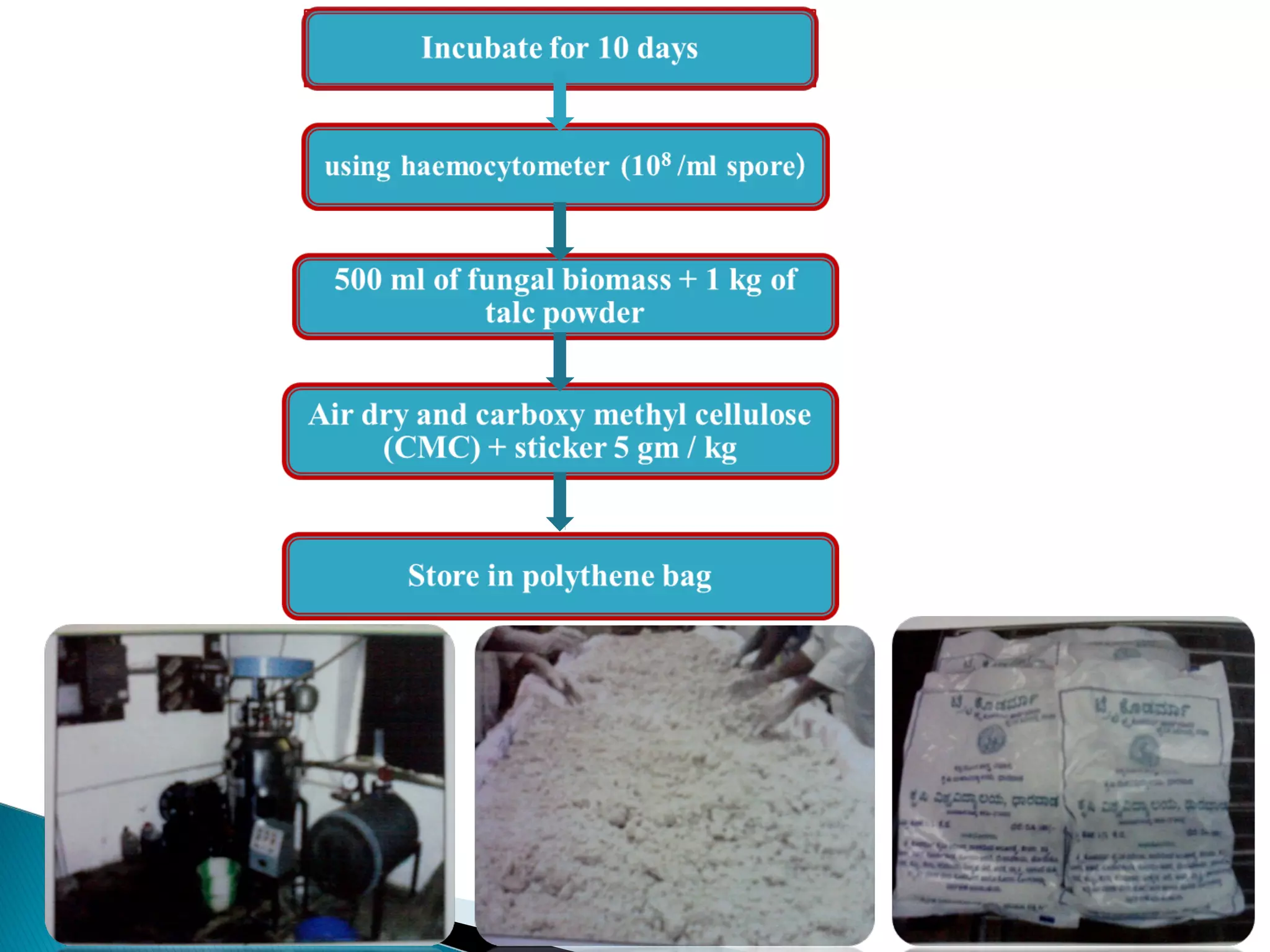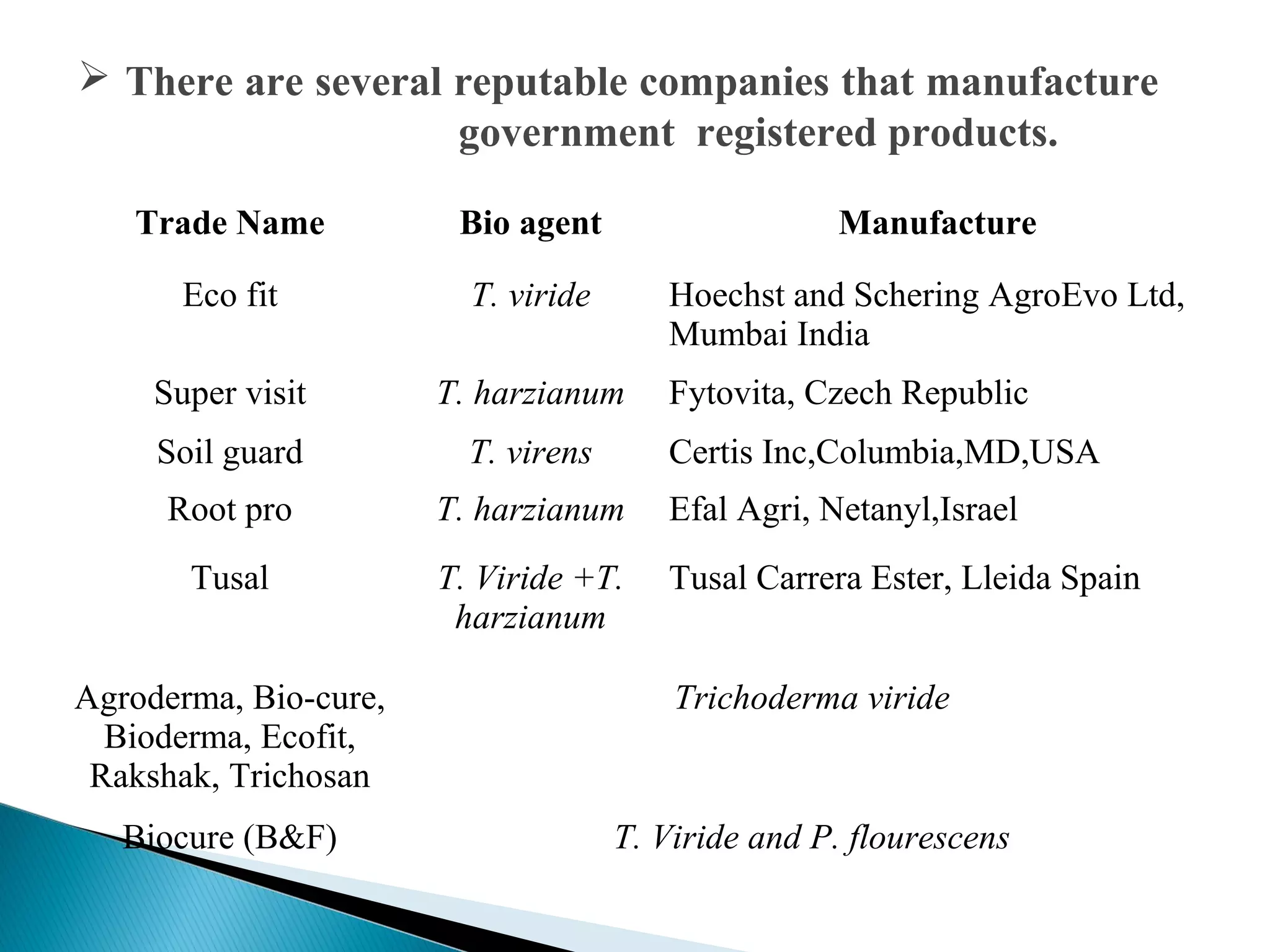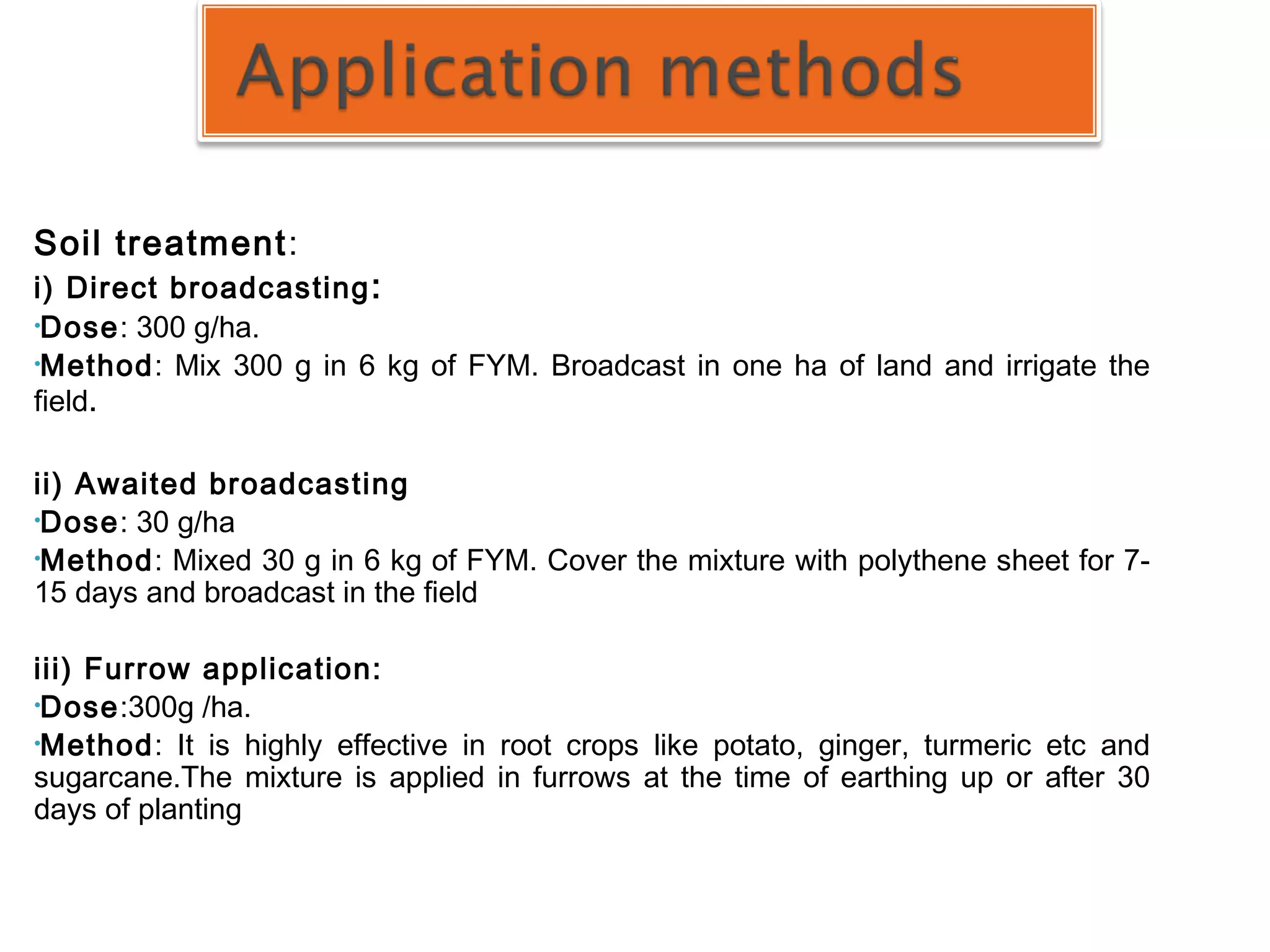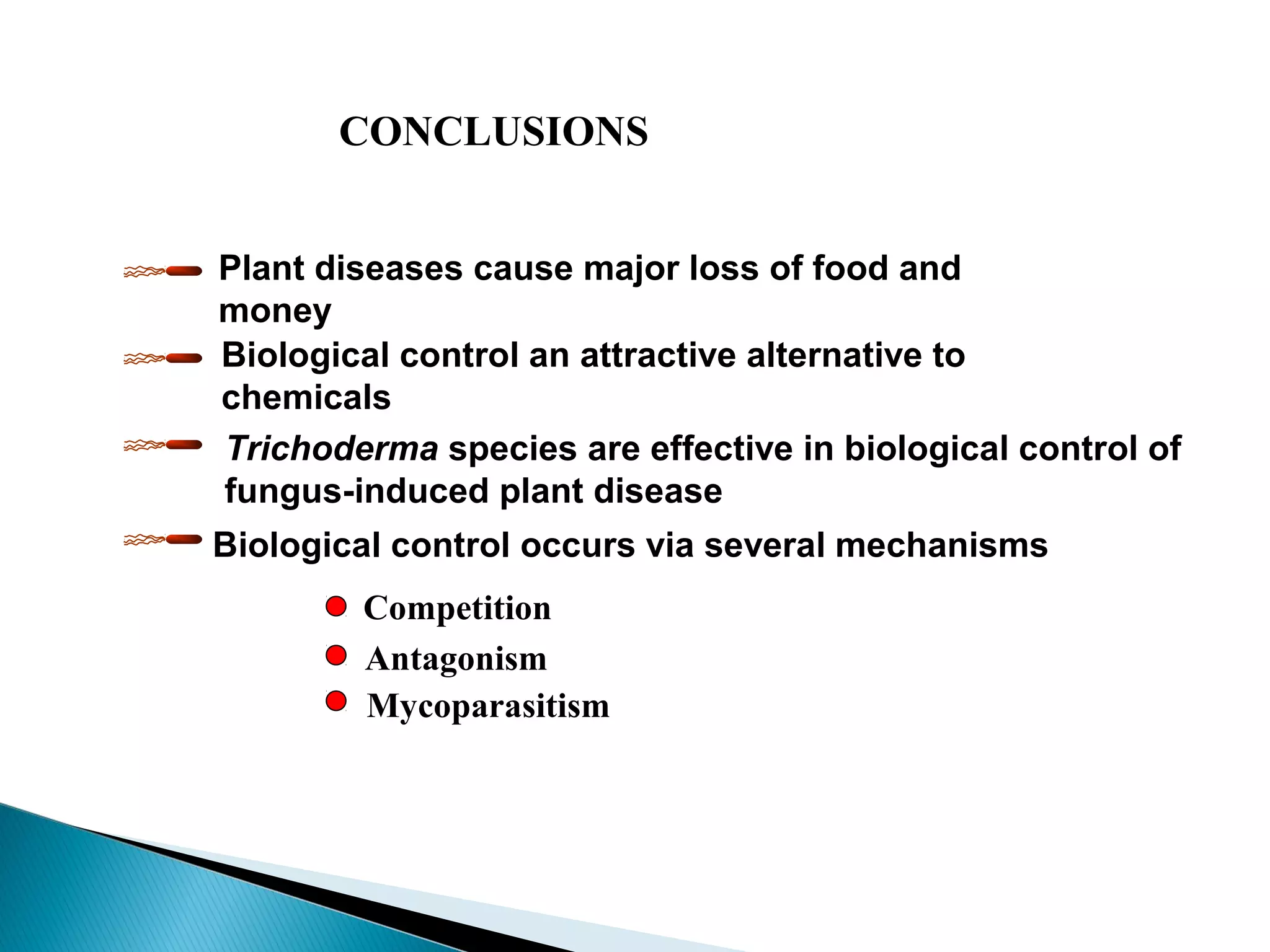Trichoderma is a biocontrol agent that can be used to control plant pathogens and diseases. It acts through mycoparasitism, antibiosis, competition, and induced resistance. Trichoderma species like T. harzianum and T. viride are effective biocontrol agents that can control diseases caused by fungi like Fusarium, Pythium, and Rhizoctonia. Trichoderma is mass produced using liquid or solid state fermentation and formulated products are available from various companies for seed treatment, soil application, and other uses to promote plant growth and manage diseases in agricultural crops.











